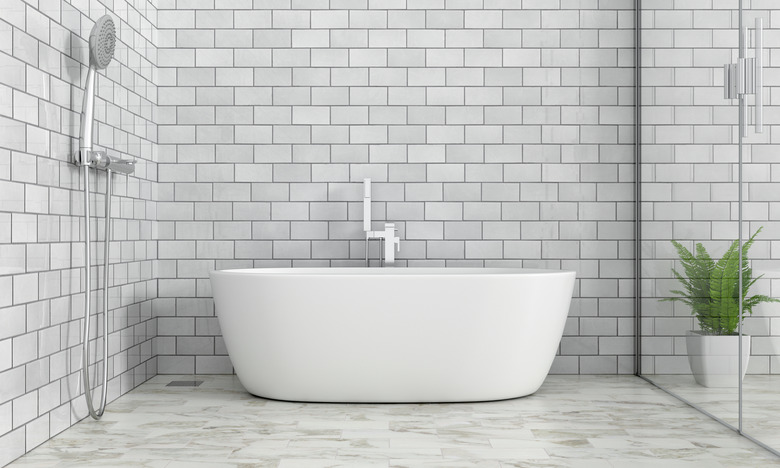How To Clean Grout Haze With A Home Remedy
Cleaning new tiles after installation is a standard practice for experienced tile installers, but occasionally we all forget to clean an area or two after a DIY tile laying project – resulting in the dreaded, milky-white clouds that form over new tile, obscuring all of your hard work. Grout haze can be a nightmare to clean when allowed to set for an extended period of time, but cleaning grout off tile with vinegar solutions is an effective, established tactic. Just remember to give your tile and grout a day to cure after being laid, or you run the risk of shifting the newly-laid tile.
What Is Grout Haze?
What Is Grout Haze?
What we know that grout haze is, in essence, the dusty mineral and cement residue left over after wiping away excess grout from the face of your tiles. Standard grout is made from a mix of cement and mineral powders combined with water: when that water evaporates, the small amount of residue left on your tile settles into a thin layer of clingy mineral dust. Because it's composed of tile grout, this grout haze sets over the course of days and becomes progressively harder to remove over time. A day or two after laying the tile, grout haze can usually be cleared with warm water, a sponge, and some elbow grease, but after that it will likely require the help of a cleaning solution.
Homemade Grout Haze Remover
Homemade Grout Haze
Remover
Thankfully, because grout haze is thin and has little to keep it together, it's easily cleared by acidic solutions. Use a homemade grout haze remover made from a vinegar solution – one part distilled white vinegar to four parts warm water if the tile has been laid within three days, or two parts vinegar to three parts warm water if it's been five days or more. To apply it, use a green scouring sponge or dedicated tile sponge, or both. Use the abrasive side of the sponge to dry-scrub first, in order to break up the top layer of grout, then vacuum or sweep up the resulting dust with a broom. Then you can use the sponge with the vinegar solution.
Heavy-Duty Haze Cleaner
Heavy-Duty Haze
Cleaner
If your grout haze is set in hard enough that the standard solution fails to make a dent, or if you have lumps or streaks of dried grout that need to be removed, make a stronger cleaner. Mix half a cup of white vinegar, half a cup of ammonia, one cup of baking soda, and two quarts of water.
This solution should solve the problem. However, vinegar-based solutions don't work in every situation: do not use this solution on slate or stone tiles. While ceramic and porcelain tile can handle the acidity of a vinegar solution, porous stones can be damaged. At the same time, if your grout is epoxy-based, this solution isn't likely to accomplish much. For those, you'll want a heavy-duty commercial tile cleaner. These can be found where most household cleaners are sold, and you'll want to pick a cleaner intended for your type of grout and tile for the best results.
